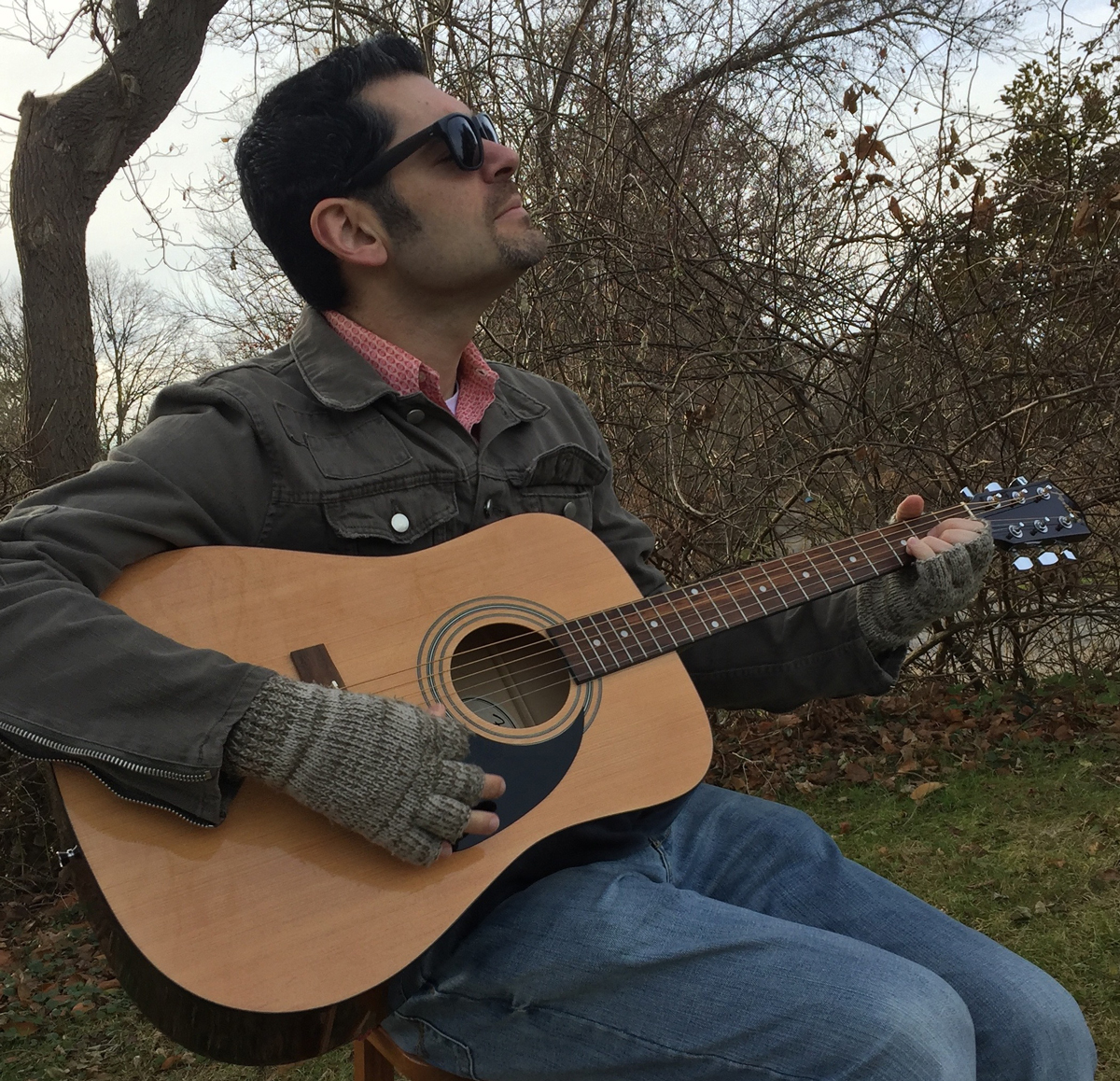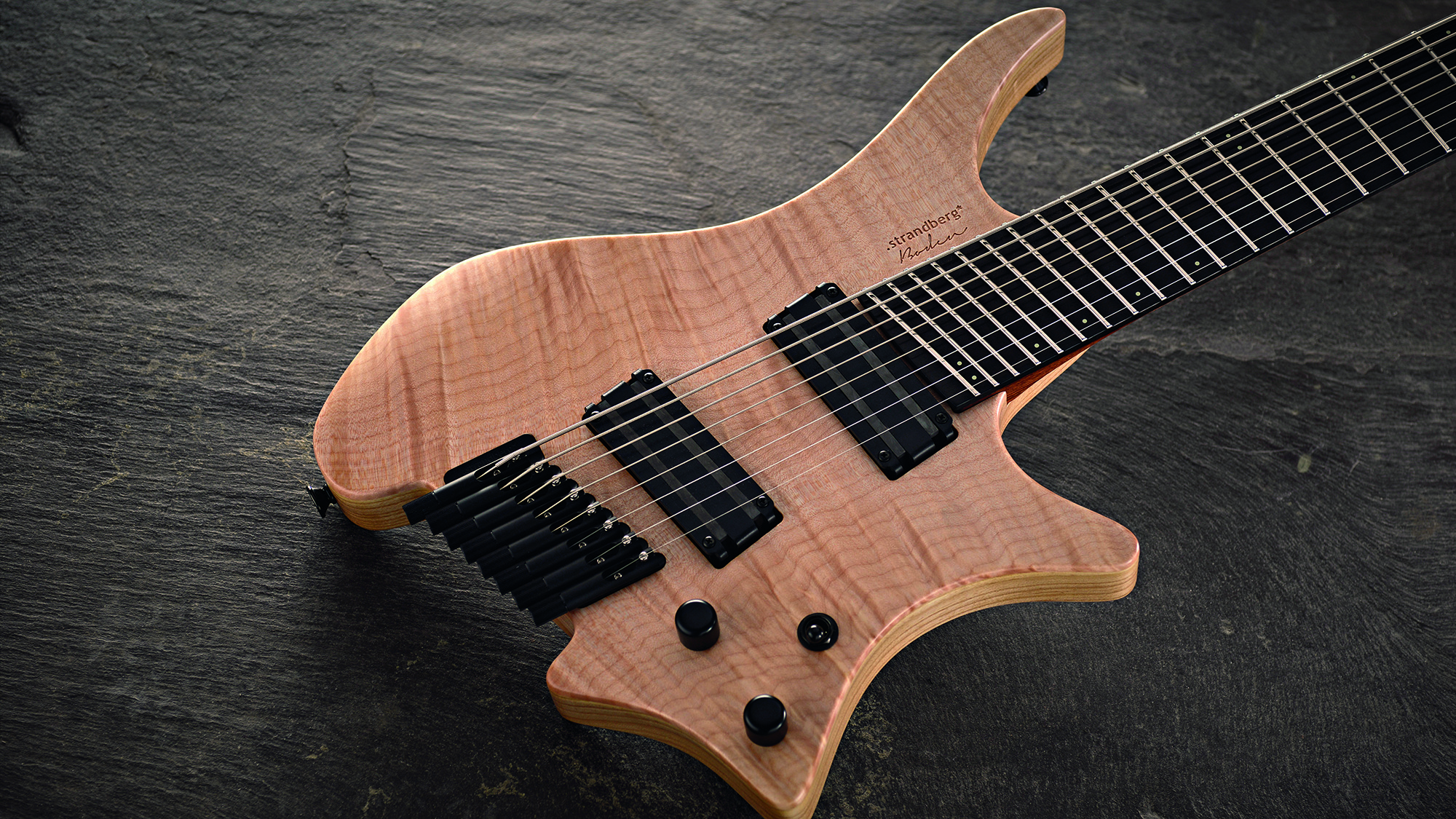“He took the Ibanez Iceman off the wall and said, ‘I’ll buy it for you... If you promise me Celtic Frost is going to be a fantastic band.’ And I said, ‘OK. Deal.’” For Tom G. Warrior, the equation has always been Ibanez + attitude = murderous riffs
The black metal guitar icon inspired a generation of heavy players, including Dave Grohl and Mark Tremonti. Thomas Gabriel Fischer reveals what kindled his unending love of Ibanez, the benefits of writing bloodthirsty riffs on tiny practice amps, and the “absolutely crucial thing that people completely underestimate in achieving a guitar sound”
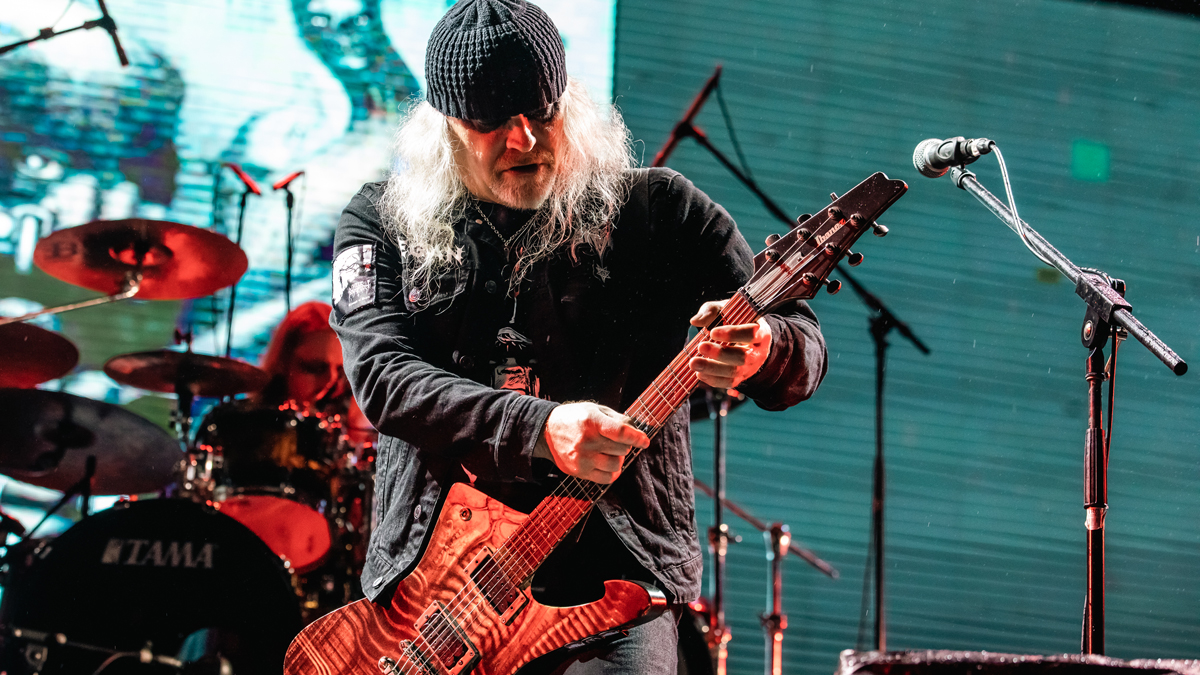
There are certain bands that can be pointed to as incredibly influential on what would become known as black metal – Black Sabbath, Venom, and Mercyful Fate among them. Two other surefire inclusions in that list are the two Swiss bands fronted by Thomas Gabriel Fischer (aka Tom G. Warrior): Hellhammer and Celtic Frost.
With an emphasis on detuned, grinding, mid-paced riffing rather than shredding (along with growled vocals and demonic lyrical subjects), the influence of Fischer’s guitar work with the two bands can be heard in groups like Mayhem, Sepultura, and Behemoth, plus even bands outside of the metal universe (Bleach-era Nirvana, for instance).
Hellhammer only existed from 1982 to 1984, and never performed any live shows or issued any full-length albums, so in 2019, Fischer – along with guitarist André Mathieu, bassist Jamie Lee Cussigh, and drummer Tim Iso Wey – assembled Triumph of Death to finally perform material from the band. Some of the best recordings of the group's live outings were recently compiled into the band's first-ever live album, Resurrection of the Flesh: Triumph of Death Live 2023.
Fischer (who is currently also the leader of Triptykon) spoke with Guitar World shortly before the album’s release to discuss guitar gear, composing riffs, and his biggest influences.
What is your current guitar setup like?
“It’s actually the exact same setup that I had in the last months of Hellhammer. I’ve kept everything. I was really peculiar about my guitar setup – I really had something in my mind as an aspiring musician in ‘83. I didn’t have the experience yet to define my guitar sound that I was looking for, and also to achieve it.
“I had to learn about amps. When I got my first Marshall, I had never touched a Marshall. At first, I had to figure out how to use this amp. So, it took me two years to arrive at this sound. Out of the blue, I felt, ‘Wow. This is what I’ve been looking for.’ Then [I had to], look at everything and memorize, ‘How did I get that?’ And that sound was basically a 100-watt JCM800 Marshall head and a Tube Screamer.
All the latest guitar news, interviews, lessons, reviews, deals and more, direct to your inbox!
An absolutely crucial thing that people completely underestimate in achieving a guitar sound is the attitude. I know this sounds like a grandfather telling you some stories, but I know what I’m talking about
“That’s the setup I’ve been using ever since – from 1984 to Triptykon. The only thing that sometimes changes nowadays is the tuning. But the guitar setup is exactly the same. For certain parts, I use a wah or an octave looped into it, but the basic sound is the Marshall and the Tube Screamer.
“Not to make the answer too long, but an absolutely crucial thing that people completely underestimate in achieving a guitar sound is the attitude. I know this sounds like a grandfather telling you some stories, but I know what I’m talking about. I’ve had numerous people in the past four years asking me when they come to the rehearsal room, ‘Can I play on your guitar?’ And when they play my guitar through my setup, the second after I play it, they sound completely different – even though it’s my guitar, my setup, my distortion, everything.
“So, this to me is the proof that half of your sound is not the technical tools that you have between you and the speaker – it’s also the way you handle the guitar, the way you hold your pick, the way you hit the strings. Your entire [approach to] playing.
“A lot of people don’t know about this. A lot of people always ask me about technical aspects and then are surprised that they don’t sound like me. The thing is you can have the greatest guitar and the best equipment, but you have to feel it. You have to be it. You have to mean it.”
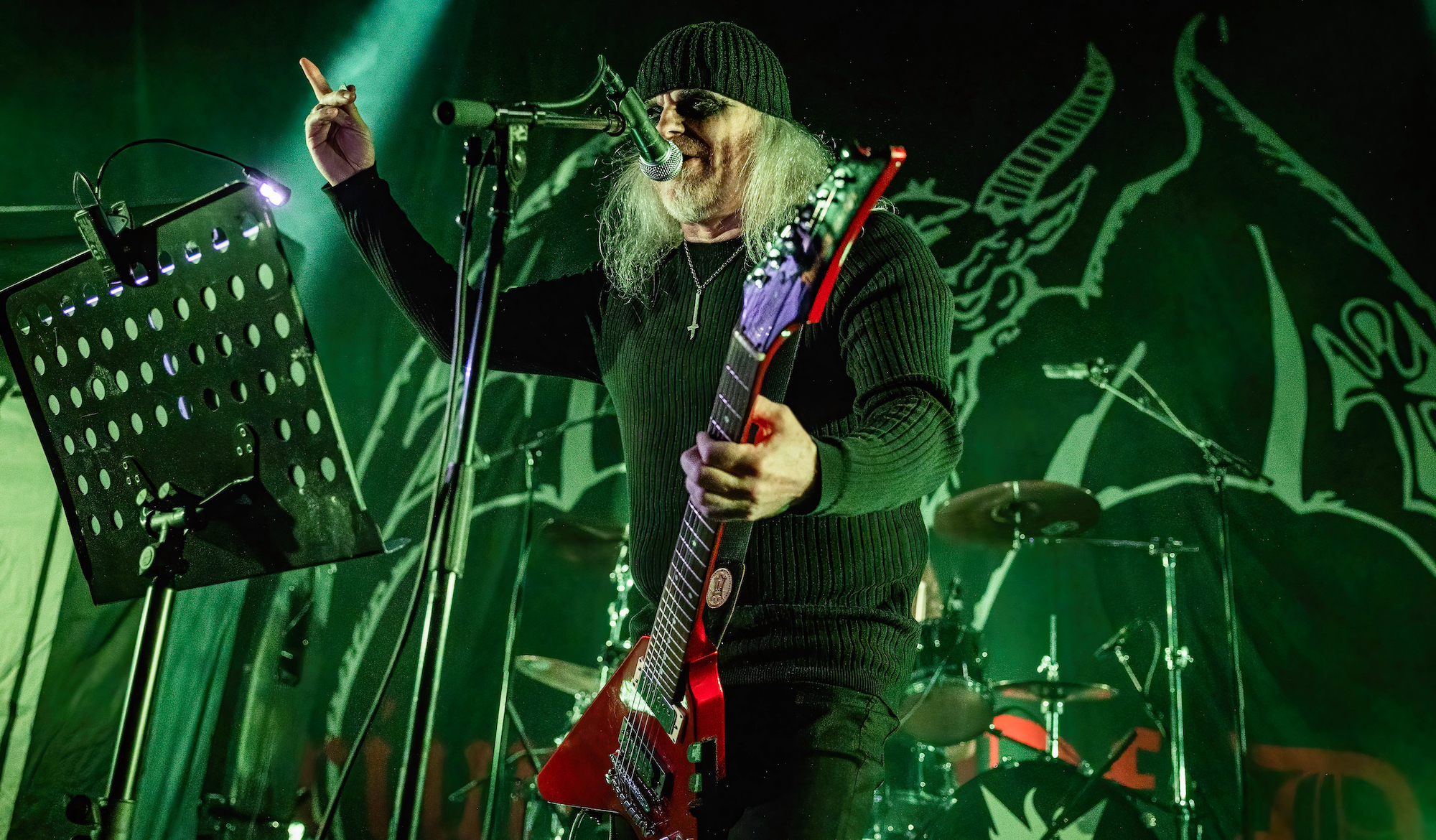
Let’s discuss your guitars a bit more.
“In Hellhammer, the first instruments that had any professional qualities were an Ibanez Les Paul copy and an Ibanez Rocket Roll II Flying V. Those were my first real instruments of any value. And I recorded everything in Hellhammer with the Ibanez Flying V. It was an old instrument that I had traded, so eventually, it fell apart.
“But, for the past decades, I’ve always felt the need to get one of these [a Rocket Roll V.] Even before I formed Triumph of Death, I went on auction sites and looked for them, and I actually found a Rocket Roll from 1982 and purchased it, and also started playing it in Triptykon.
“I was also able to [purchase one] in my hometown of Zürich. I walked into a music store and the guy working there knew me, and said, ‘Look at what we have here on the wall’ – it was another Rocket Roll II Flying V by Ibanez, that was owned by the Swiss prog-rock band, Krokodil, who were quite big in Europe in the 1970s.
“So I now have two of those – and that’s basically the Hellhammer sound. I’m unwittingly continuing Swiss music history by playing this guitar that was already once in the hands of somebody that mattered in Swiss music, which is quite an honor.
“I’ve always been true to Ibanez. I’ve tried one or two other guitars in my life, but Ibanez is really the other side of my guitar sound.”
So those are the guitars you used with Celtic Frost and also currently?
“Well, with Celtic Frost, I mainly used an Ibanez Iceman – in various incarnations. And since Triptykon is basically a continuation of Celtic Frost, my main guitar there is the Ibanez Iceman Limited Edition HR Giger model.
“I also brought the old Les Paul copy by Ibanez from the 1970’s that I played in Hellhammer. And of course, the temptation was too big, so I also played these with Triptykon and fit very well – they’re close enough to the Iceman that it preserves the Triptykon sound.
“It gives me a very nice feeling to know 40 years on, I’m still playing these instruments that launched my career.”
How did you come to play the Iceman with Celtic Frost?
“I always loved the Iceman shape. When I was an aspiring musician, I saw the Iceman in magazines with Kiss and some other bands – the German band Sinner – and I absolutely loved the shape, but I couldn’t afford one at the time. Hellhammer were really an underground band and we were very poor – we came from very poor backgrounds.
“So, we formed Celtic Frost on the last day of May 1984, and we had a guy who was basically our guitar tech – who helped us with everything. And I went to a music store in my hometown with him to buy some guitar strings, and there was an Ibanez Iceman on the wall. We looked at it, and I said, ‘Wow. This is such a beautiful guitar.’
“So, he took it off the wall, and said, ‘I’m going to buy it for you...’ – because he had a regular job – ‘... If you promise me Celtic Frost is going to be a fantastic band.’ And I said, ‘OK. Deal.’
“So, that was my first Iceman and I loved it so much that, ever since then, the Iceman has defined my musical life.
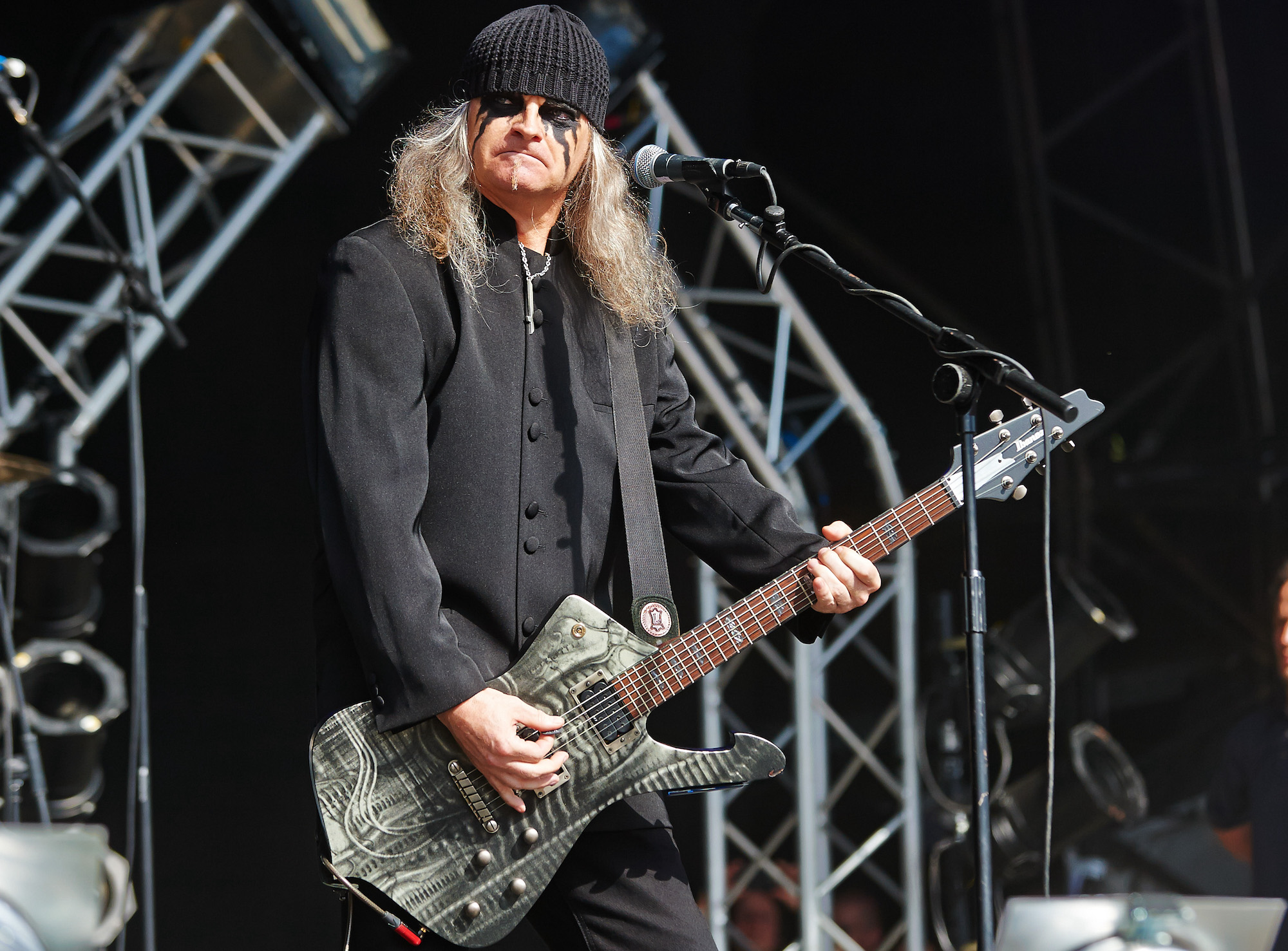
“I always thought of the Iceman as basically a slightly different Les Paul. It basically has the same layout – it’s just slightly different in the body. But it’s a hidden Les Paul. And there are so many Iceman models over the years that not all of them sound good. I’ve tried pretty much all of them, and half of them don’t sound the way I like them to sound.
“I like Icemans that have this full, warm, bassy sound. And that’s why I am in love with the HR Giger Iceman – it really has a most brutal but still warm sound. And that’s perfect for the dark music that I’m playing.”
I heard Black Sabbath and it didn’t follow the harmonies that you would expect from any other band. It wasn’t all melodic and logical. They always found some dark twist in their riffs, and I wanted to know, ‘How does he do that?’
What makes the HR Giger Iceman so special?
“Ibanez approached Giger [the late Swiss artist] I think in 2005, and suggested it to him through his American agent. The agreement came together that they would do a small number of guitars together – all of them limited. One of them was a Giger Iceman, and it was limited to 150 copies.
“Giger and his American agent actually called me and [Celtic Frost bassist] Martin Ain when the prototypes of these guitars arrived at Giger’s house here in Zürich. Giger wanted to hear our opinion about them – so we went there and I held the guitars in my hand, played them acoustically, and I was excited.
“They sounded fantastic – they sounded better than the standard models. So, we gave our OK as musicians. We said, ‘Yeah. By all means, do this.’ So, that’s how they came about. We had a tiny, tiny part in this.
“And then, of course, it was a coincidence that Celtic Frost had worked with Giger as far as the cover [of 1985’s To Mega Therion] was concerned, and I was playing Icemans to begin with. So, it was small step to also adopt Giger Icemans for Celtic Frost. And I’ve owned four of those by now.”
Who were some of your early guitar influences?
“It’s not very original but I would be lying if I didn't credit Tony Iommi. I actually learned playing guitar by literally sitting in front of my record player with the vinyl of [Black Sabbath's] Volume 4 in 1982 – always putting the needle at the same point and trying to figure out how to play these riffs.
“I couldn’t explain it at the time, but I heard that Black Sabbath music and it didn’t follow the harmonies that you would expect from any other band. It wasn’t all melodic and logical. They always found some dark twist in their riffs, and I wanted to know, ‘How does he do that?’
“So, I actually sat down as a complete nobody – not knowing anything – and tried to find how he plays this on my own guitar neck, and figure out ‘What is this style of Black Sabbath?’ That’s how I started playing guitar.
“Then later, there were people such as Kevin Heybourne from Angel Witch. To me, he was a huge inspiration, because he, too, took Black Sabbath to a different level – which I totally loved.
“Of course, I was also blown away like the rest of the world when Ozzy Osbourne brought out Randy Rhoads. I couldn’t believe what I heard.”
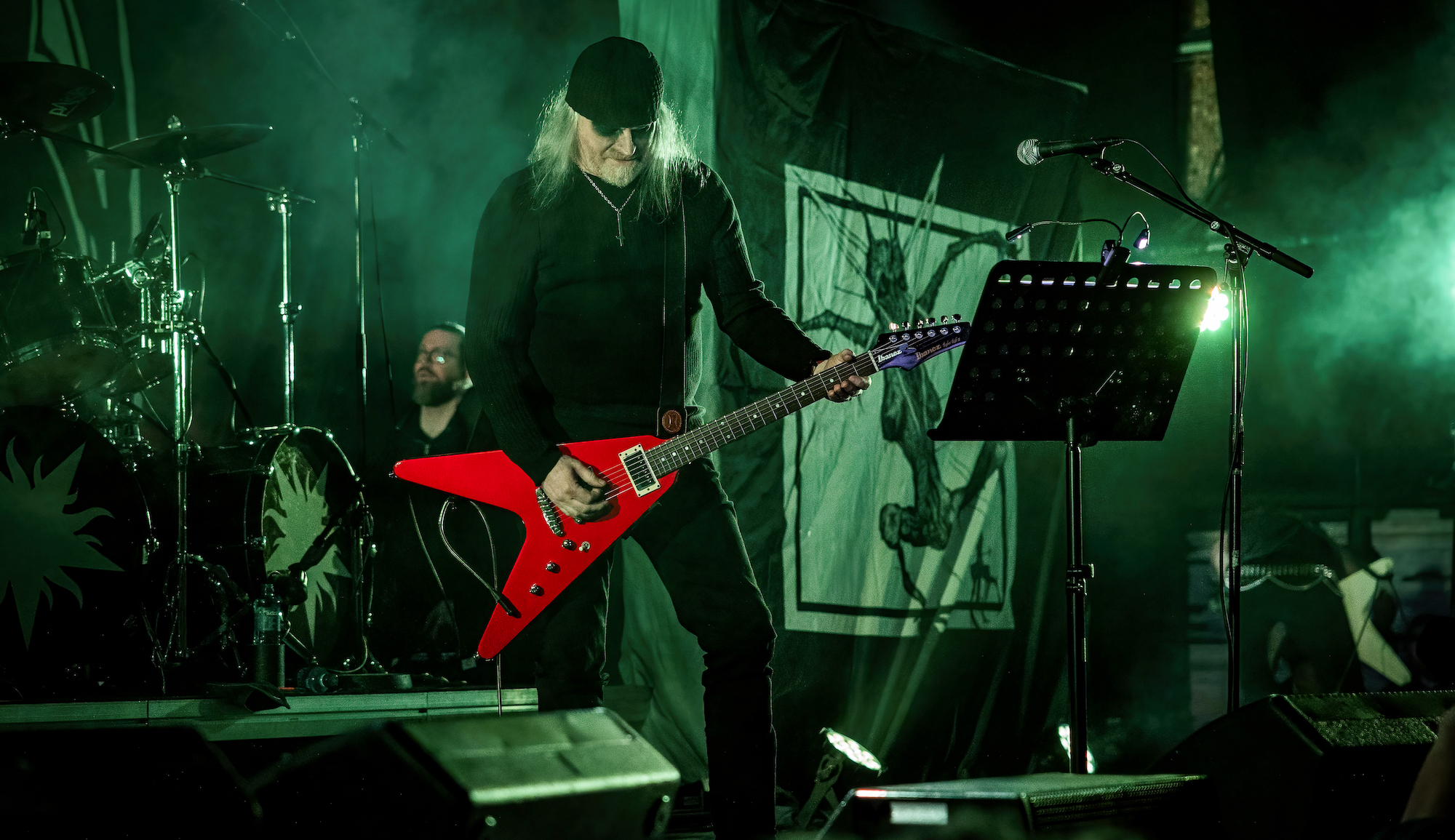
On Instagram recently, I saw a photo of you and Uli Jon Roth. Was he an influence, too?
“Absolutely. To me, the first period of the Scorpions – when they had Uli – [were an influence]. Uli’s not just an exceptional guitar player, but he’s an exceptional songwriter. And the Scorpions, their early work was melodic, but also very dark. It was just a perfect combination for me. I absolutely loved all the albums with Uli Jon Roth. And that’s a love I'll carry in my heart for the rest of my life.
“I saw him in concert many times in the meantime, and he’s always phenomenal – even at this advanced age. He has managed to preserve this spirit. He must have played these songs a million times, but it doesn’t sound like a routine – you always feel it’s honest when he plays.”
I have a Marshall stack here at home, but I actually write on a small Fender practice amp – almost lower than the way you listen to a radio at home
Are there any modern-day guitarists that you admire?
“There’s plenty. There are so many progressive metal bands, for example, that have mind-blowing guitar players – starting with Devin Townsend. I also admire guitar players that are maybe not as technically proficient as the people we just talked about, but have a proficiency as far as atmosphere is concerned – such as for example, Wino [Scott Weinrich] from the Obsessed.
“When he plays guitar, you immediately hear it’s Wino, and he has a very unique style of a groove that many other guitar players are lacking. That too – to me – is a quality in guitar playing. It’s not always the technical finesse.”
How do you find you write your best riffs?
“I need a really quiet environment. I need my peace to focus. I have a Marshall stack here at home, but I actually write on a small Fender practice amp – almost lower than the way you listen to a radio at home.
“I write very quietly – because I know if it works at that volume, it will sound monstrous at a loud volume. I really don’t want to trick myself into writing something loudly – and of course, everything sounds cool when it’s loud – only to find out later that it’s not such a good riff and I was tricked by the volume.
“So, I write everything really quietly at home and then take it to rehearsal, where it will sound great if it works here.”
How did you come up with your own guitar style?
“This arose out of sheer desperation. Me and Martin Eric Ain – with whom I formed Celtic Frost – always knew we didn’t have the talent to become one of those super-technical musicians, but we wanted to create music, so we had to compensate with trying to be original. We had to compensate with trying to have ideas that others don’t have – because we could never compete on a technical level.”
It seems like by and large, a lot of younger metal guitarists focus on the technical aspect – it’s not as “feel-oriented”.
“I fully agree, and then of course, I’m careful with stating that publicly – I don’t want to sound like a dinosaur, and I’m sure people like Tony Iommi said that about my generation when the New Wave of British Heavy Metal happened.
“But I tend to agree – a lot of people followed the same leaders that sound alike, and then they do the rest with over-editing. I prefer character.”
- Resurrection of the Flesh: Triumph of Death Live 2023 is available now via Noise/BMG.
Greg is a contributing writer at Guitar World. He has written for other outlets over the years, and has been lucky to interview some of his favorite all-time guitarists and bassists: Tony Iommi, Ace Frehley, Adrian Belew, Andy Summers, East Bay Ray, Billy Corgan, Alex Lifeson, Geddy Lee, Les Claypool, and Mike Watt, among others (and even took lessons from John Petrucci back in the summer of ’91!). He is the author of such books as Grunge Is Dead: The Oral History of Seattle Rock Music, Shredders: The Oral History of Speed Guitar (And More) and Touched by Magic: The Tommy Bolin Story.
